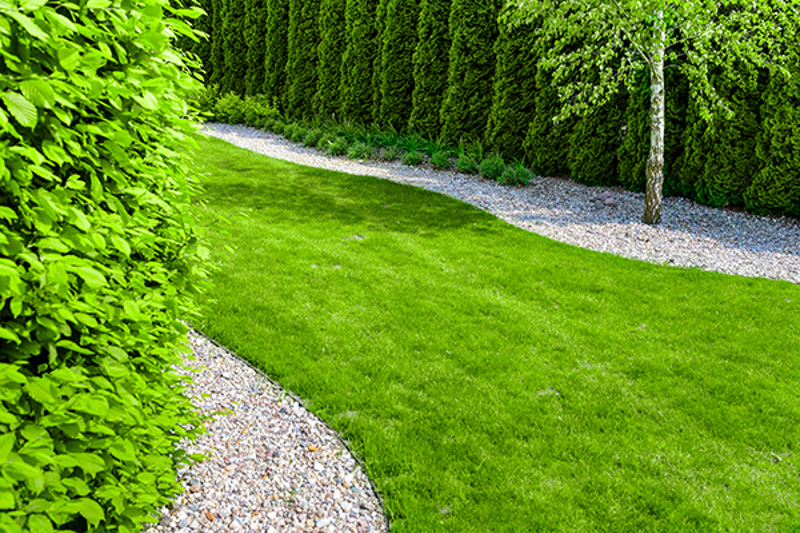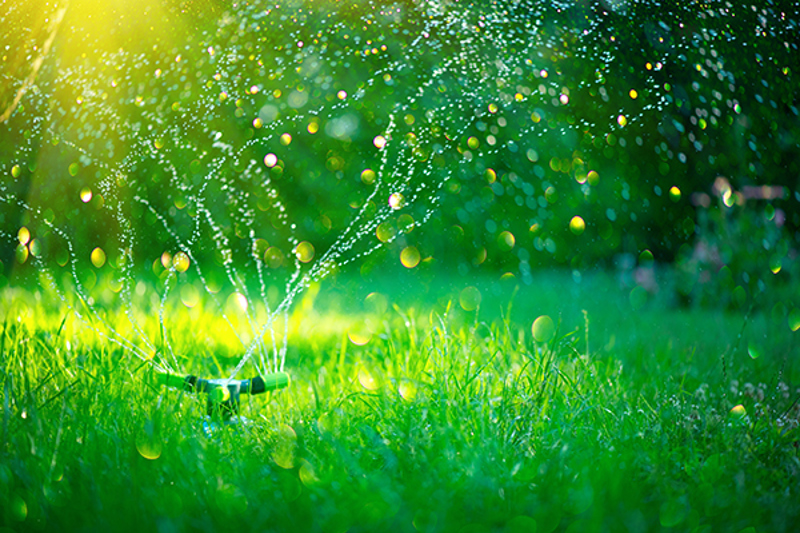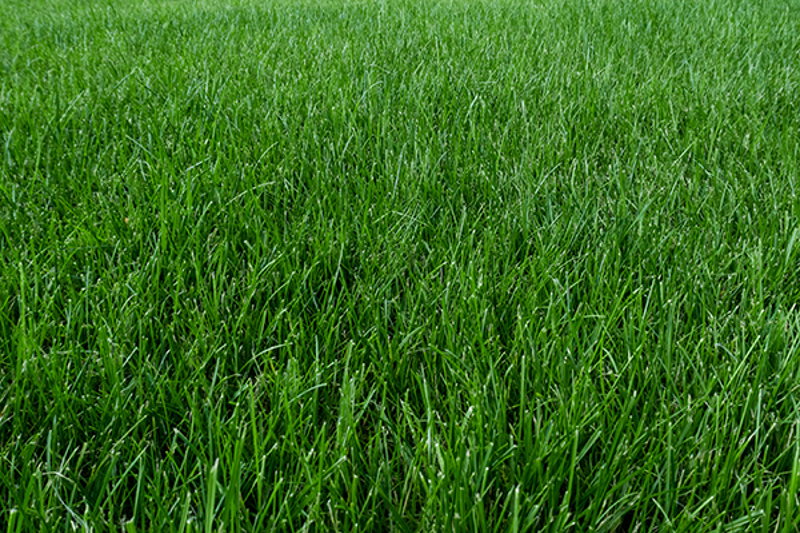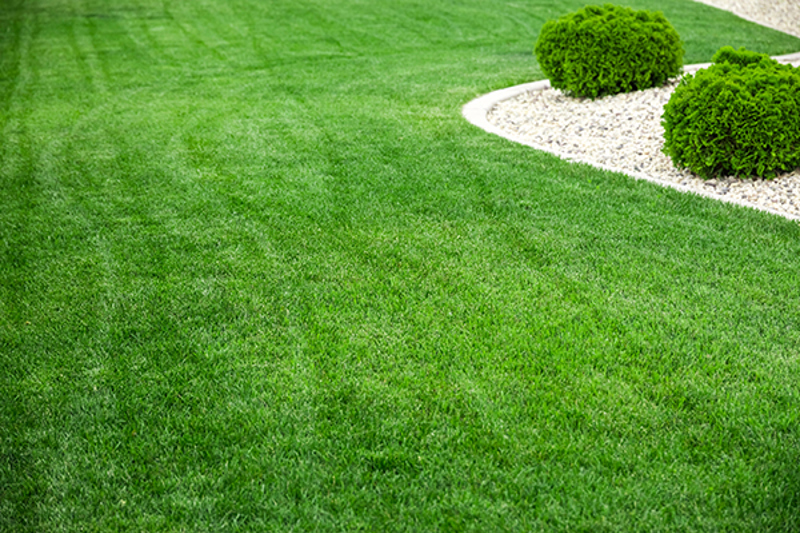Yates Account
Join now
Create a Yates account today!
Sign up to join the Yates Garden Club for monthly e-mails packed with seasonal inspiration, tips for success & exclusive promotions.
Plus if you’re a Garden Club member you can take part in the Yates Growing Community - a blog to share successes, get advice & win prizes in fun challenges along the way!

Forgot password
Enter the email address associated with your account, and we'll email you a new password.

Lawns are made up of thousands of small, hungry, individual plants. In fact, there's over 100,000 blades of grass in every square metre of lawn!
Grass grows quickly while it’s warm, using up lots of energy. Mowing also depletes the lawn’s energy reserves.
It's pretty easy to see why lawns need a helping hand to look their best.
Why Fertilise?
It’s a common misconception that lawns and plants get all the food they need from the sun. Sadly, this isn’t true. All plants require additional nutrients to grow; in many cases, these are drawn from the soil. However, over time, the nutrient “bank” in your soil starts to diminish – it’s what naturally happens when you continue to make withdrawals, but no deposits.
You can fix this by adding a fertiliser to replace those depleting nutrients in your soil.
Regular fertilising keeps your lawn healthy and green right through the year. Reduced growth and pale colour are two of the main symptoms of poor nutrition in a lawn - your grass will also look sparse and weak.
Application of a balanced fertiliser is the simplest way to manage turf nutrition, as it supplies the grass with adequate levels of all the required nutrients.
Fertilising is also the easiest way of controlling weeds in lawns, because the thicker, stronger grass seizes space and nutrients from weeds and discourages them from getting started.

Science™ Alert! Liebig’s Law of the Minimum
So, why is this nutrient bank so important? Each nutrient plays a different part in regulating plant growth. When one or more nutrients becomes depleted, this can affect or restrict the entire growth of the plant.
Liebig’s law of the minimum is a principle used in agriculture, that says the growth of plants is restricted by the scarcest nutrient; if any single nutrient is lacking that acts as a limiting factor to growth.
It’s basically the plant version of the saying “a chain is only as strong as its weakest link”. That means you can throw lots of extra nutrients at a plant, but unless you increase the level of the one that is most lacking, you won’t achieve any extra growth. We need to correct nutrient deficiencies to ensure plant health and growth reaches its full potential.
The primary nutrients in plants are NPK, the big three ‘macronutrients’: Nitrogen (N) Phosphorous (P) and Potassium (K). While these macronutrients are essential in all plants, the ideal proportion of each nutrient is very specific for lawns, so don’t use a lawn fertiliser on another type of plant!

What is N-P-K all about?
N: this is the percentage of Nitrogen in the product. Nitrogen is the primary nutrient to keep lawns green and it helps with disease and wear tolerance.
P: the percentage of Phosphorus in the product. Phosphorus promotes healthy roots, to improve uptake of nutrients and speed up growth. It also assists drought tolerance.
K: the percentage of Potassium in the product. Potassium strengthens grass metabolism at the cellular level. It helps grass to retain water and increases tolerance of tough climatic conditions e.g., drought or frosts. Potassium also has a part to play in root development.
If we use the NPK ratio of Yates Dynamic Lifter as an example, the 'NPK analysis' is expressed as 3.2 : 2.6 : 1.3 +TE. This means it contains 3.2% Nitrogen, 2.6% Phosphorus and 1.2% Potassium. TE stands for 'trace elements', which really boost plant nutrition when added to fertilisers.
Getting the best results from your fertiliser
For the best results from your fertiliser, you need to make sure you:
- Choose the right fertiliser
- Apply it accurately
- Water properly
- Re-apply proactively (don’t wait until nutrients are depleted again)

Choosing the Right Fertiliser
Fertiliser is generally either a granular, or liquid format. Granular plant foods are made up of solid granules or prills, while liquid fertiliser contains water-soluble ingredients. Liquid types tend to be absorbed by plants very quickly. Granular fertilisers take a little more time to be broken down so plants can access their nutrients.
Organic or natural fertilisers can fall under either category. Generally organic fertiliser is made from organic sources (known as feedstock), like composted animal manure, blood & bone, or feather meal.
There are also natural fertilisers that aren’t made from organic feedstock, like Dolomite Lime or Sulfate of Potash: these are still OK for use as certified organic inputs because they come from natural mineral deposits in the earth. A fertiliser that contains any synthetic (man-made) ingredient can never be considered organic.
Yates Dynamic Lifter Organic Lawn Food, which combines composted chicken manure, blood & bone, fish and seaweed is ideal to enrich the structure of the soil. It does this by adding organic content that encourages earthworms and beneficial soil micro-organisms, that in turn help to improve the soils porosity (drainage) and air movement. This all makes it easier for your lawn to grow and root deeper into the soil.
Keeping your microbes happy is the secret to a good lawn, because the microbes break down fertiliser into a form that lawn grass can absorb! When you feed your lawn, you’re actually feeding the soil microbes: they respond by feeding the grass for you.

Granular Fertilisers
This category often causes confusion, as there are some very different types of fertiliser under the general ‘granular’ description.
It’s very common for fertiliser to be supplied as prills, which are tiny spherical pellets, created by melting the raw fertiliser. This is done to make handling and application easier, plus it reduces dust. Different fertiliser prills can then be blended into a mix to make up a specific recipe.
If the fertiliser is dissolved into a specific combination of ingredients before it gets melted into prills, it’s known as a granulated fertiliser. They’re easy to spot as the prills are all the same colour. Granulated fertilisers deliver a uniform, consistent result without any patchiness.
One of the downsides of using straight fertiliser blends is ‘fertiliser burn’, which can be caused by overdoing the application, or not applying enough water with the fertiliser. Because granular fertilisers contain salts, if there isn’t enough water supplied the fertiliser will absorb water by sucking it out of the grass plants, which causes leaf burn. The risk of fertiliser burn increases in higher temperatures.
Because newly sown lawns are especially prone to fertiliser burn, we have a product which is safe to use on freshly sown grass. Yates Lawn Fertiliser for New Lawns is designed to give your new lawn the right nutrients to encourage fast establishment of grass, while feeding for up to 12 weeks.
To reduce the risk of burning, premium lawn fertilisers are often coated, which makes them into slow release fertilisers. Coating prills with a thin layer of polymer allows them to release nutrients over a gradual, controlled time period. The polymer degrades with exposure to moisture at a very specific rate (influenced by temperature), so it begins to release the nutrients contained inside, in a very controlled fashion.

Slow Release Granular Fertilisers
There are real advantages to using a premium slow-release fertiliser. Reduced frequency of application is an obvious one, but avoiding surges or spikes in growth and nutrient overload is also a major benefit. Slow-release fertilisers perform consistently well throughout the year, because they supply just enough nutrients to match the grass’s needs, whether it’s dormant or growing flat-out. They tend to be more expensive than standard granular fertilisers, but we think the benefits make this type of fertiliser the best value for money.
Your lawn grass and microbial soil community underneath it are in sync with each other, and with the seasons - when the grass becomes dormant, the microbes are also snoozing. As soil temperature rises and everything begins to speed up, grass nutrition is able to accelerate, because most of the nitrogen in slow-release fertilisers is actually 'unlocked' for grass by soil microbes.
For controlled release lawn foods, this means that nutrients are only supplied at the rate grass can use them; in comparison, the excess nutrients in fast-release fertilisers can go to waste at cooler times of the year. If you feed your lawn a big dump of fast-release nitrogen in cold conditions, it won't be completely absorbed - the excess nitrates can remain in the soil and will eventually leach into groundwater.
Yates Lawn Fertiliser Twice A Year is a professional grade controlled release granular fertiliser, suitable for all New Zealand lawn types: including kikuyu, ryegrass and fescue. Designed to give you a strong, green and healthy lawn, Yates Lawn Fertiliser Twice a Year releases nitrogen and potassium for up to 6 months, so you achieve a long-lasting consistent result, without surge growth. Nutrient runoff and nitrate leaching are also minimised.
Yates Lawn Fertiliser Quarterly is a premium granular lawn food designed to give you a strong, green and healthy lawn. The fine granules dissolve when watered in and quickly filter down to the roots. Ideal for all lawn types, it combines the benefits of both fast-acting and gradually released nitrogen: the fast release component provides rapid results in 7 days, while the slow release feeds over a prolonged 12 week period.

Liquid Lawn Fertilisers
Liquid lawn fertilisers offer some great advantages. The main bonus is ease of application: covering an area accurately is much easier than with granular format fertilisers. Liquid fertilisers also tend to absorb straight into grass leaves, which delivers very fast results.
Traditionally, liquid lawn foods have only been available in fast release versions, but Yates has overcome this limitation. We are proud to have developed a first-to-market slow-release liquid fertiliser, that feeds your lawn gradually for up to 12 weeks. This innovative product combines the benefits of a liquid formulation with all the advantages of a slow release fertiliser. Even better, it’s a hose-on, for ultimate convenience!
Yates Lawn Fertiliser Quarterly - Hose On is a fully-featured lawn food that delivers thicker, greener and healthier lawns, powered by 6 state-of-the-art ingredients. It features seaweed to reduce lawn stress, humates to stimulate the beneficial lawn microbes that feed your grass, iron, magnesium and trace elements to deliver a deep green, lush lawn and a wetting agent to boost water penetration into soil and improve soil structure.
The clever methylene urea formulation delivers the extended 12-week feed duration, with the added bonus of reducing nitrogen leaching into groundwater.

Apply Accurately
Applying your fertiliser accurately begins by measuring out your area. This will help determine the coverage amount, to ensure you don’t over or under apply.
- Make sure your lawn soil isn’t dry. Fertiliser should never be applied to a lawn suffering moisture stress. If in doubt, start to water a few days before application.
- Measure out the required amount. Check your label and measure your lawn to determine the required amount of fertiliser. Remove this from the bag and split it into 3 equal piles.
- Divide your lawn into two equal sized sections and start spreading the first fertiliser pile over the first section – aim to use it with none left over, but not come up short. Repeat for your second area, using the second pile.
- If you do run out before you finish, use the third pile to complete the lawn. If you’ve covered both sections without running out, spread the third pile out to cover the entire lawn with a more thinly scattered dispersal, this time travelling at right angles to your first passes.
- Store the remaining product in a dry cool place, out of reach of children - or share it with your neighbours, friends or whānau.
Water Properly
When applying a granular fertiliser, it’s important to follow up this fertiliser with a generous amount of water. Water it in well after application and again the next day, to ensure the fertiliser gets into the soil. Following up with regular watering over the next 21 days is vital, as the lawn will need water to supplement its new growth!
Re-apply Fertiliser Proactively
Always apply fertiliser proactively, don’t wait until the lawn starts to look unhealthy! Resurrecting a sad, nutrient-depleted lawn always requires far more time and cash than sticking to a regular fertilising schedule does. The fertilising rule of thumb is ‘light and frequent’, for best results.
After you apply a fertiliser, note the timeframe stated on pack, make a note in your diary or calendar and reapply before the nutrient levels drop off.
















Share
Share this article on social media